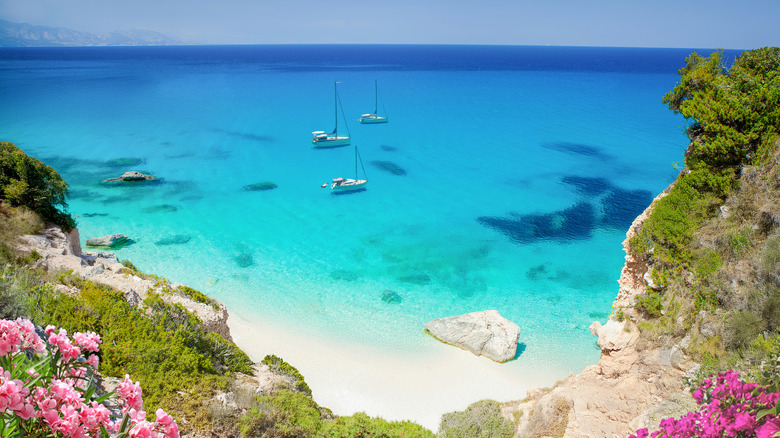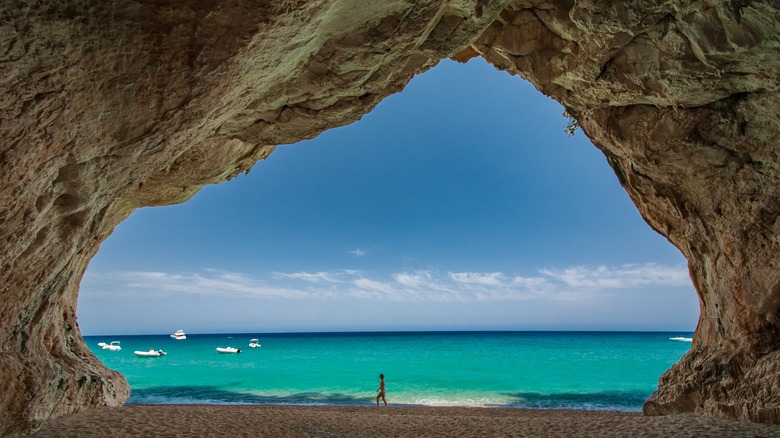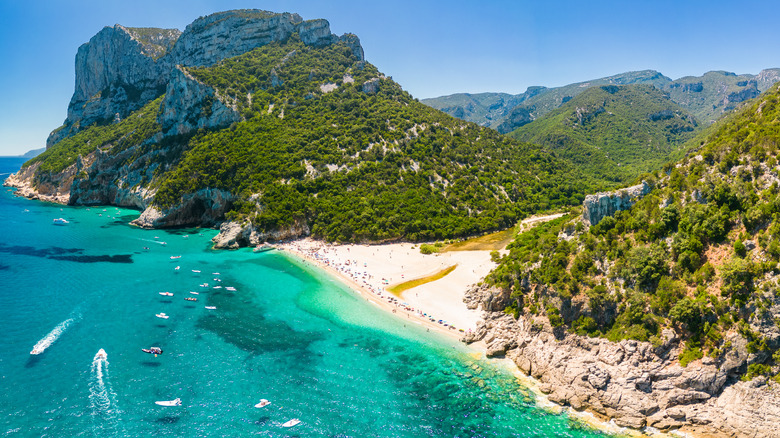Hidden On Italy's Gulf Of Orosei Is A Coastal Getaway Nowhere Near Tourists' Radar With Mountains And Beaches
For years, sun worshippers have been flocking to Sardinia for powdery beaches with turquoise waters (often compared to the beaches of Tahiti). Combine that with a life expectancy that easily hits triple digits, and it's no surprise that Sardinia holds a timeless appeal.
The eastern coast of Sardinia, particularly along the coast of Baunei on the Gulf of Orosei in Ogliastra, is home to a stunning blend of lush mountains and picture-perfect beaches. As the first Blue Zone region ever identified, this particular area of Sardinia is incredibly special for locals and all those who visit. Sandwiched between the Tyrrhenian Sea and the Gennargentu mountains, Ogliastra boasts a unique juxtaposition that offers something for everyone.
In addition to mountains and beaches, visitors can explore Grotta del Fico (a unique cave that connects to the sea), Su Marmuri's Cave (famous for its unique colors and formations), and a range of limestone cliffs, all part of the Supramonte mountain range along the coast.
Exploring coves, grottos, and rock formations
Most travelers flock to the north, where Sardinia's La Maddalena island is famous for stunning white sand beaches, similar to the ones on Costa Smeralda (the Emerald Coast) and Alghero. However, the Gulf of Orosei, with its pebbly beaches and verdant mountains, renders the area a bit more off the beaten path.
The coastline is wild and a true gift for those who make the effort to get there. It's full of stunning coves, like Cala Luna (pictured), where visitors can snorkel and dive in the grotto. It also has plenty of hikes for the adventurous, such as Cala Goloritze, one of the world's best beaches with a rock formation that is over 400 feet tall. Most coves are only accessible by hiking down or by taking a coastal route and arriving by boat.
Ambitious hikers can trek the length of the Ogliastra coast (37 miles) or a portion of the four legs that make up the distance between the Aragonese Tower in Tertenia and the islet of Ogliastra, an iconic site in the village. In total, the full hike takes around 15 hours and can be broken down over several days. The path goes through natural pools, waterfalls, riverbeds, and wild stretches, with coastal views as far as the eye can see.
Reaching Sardinia and enjoying its life-prolonging food
A big reason why people live so well and long in Ogliastra is their diet. When visiting, expect to feast upon plenty of local, nutritionally rich food. Fresh sheep and goat milk dairy products, as well as homemade grains like pane carasau bread, which is rich in protein and very low in gluten, make an excellent combo. According to Blue Zones, whole grains like this surprisingly make up 47% of the Sardinian diet — way more than anything else.
A heavy rotation of seasonal veggies like tomatoes, artichokes, chickpeas, and beans are also star ingredients. And then there's the wine, of course. A healthy serving of cannonau, a local red wine, is also good to complement the Sardinian diet as it is rich in antioxidants. With a diet and natural beaches like this, it's surprising yet nice that Ogliastra remains fairly untouched.
To plan your visit, aim for shoulder seasons on either side of summer. September and October are ideal as the water should still be warm but with thinner crowds. The second largest island in the Mediterranean, Sardinia has three main airports, two in the north and one in the south. In the south, Cagliari Elmas Airport (CAG) is the largest and busiest international and domestic airport on the island. Olbia Costa Smeralda Airport (OLB) is in the northeast area of the island, and Alghero-Fertilia Airport (AHO) is in the northwest. You can also take a ferry from Spain, France, and Italy to Sardinia. However you arrive, you'll need to rent a car to explore freely.


